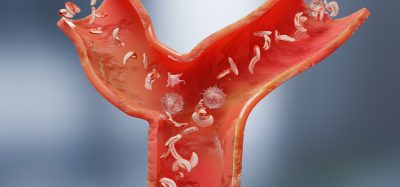A mathematical algorithm to network complex drug interactions
Posted: 21 June 2022 | Ria Kakkad (Drug Target Review) | No comments yet
Researchers used mice to develop a mathematical algorithm of a heart attack.


Researchers at the Ohio State University, US, have developed a mathematical algorithm in mice that predicts several useful new drug combinations that could treat heart attacks. The research was published in the Journal of Theoretical Biology.
Typically caused by blockages in the coronary arteries, these cardiovascular events are experienced by more than 800,000 Americans every year, and cause 30 percent of these to die. But even for those who survive, the damage these attacks inflict on the muscles of the heart is permanent and can lead to dangerous inflammation in the affected areas of the heart.
Treatment to restore blood flow to these blocked passages of the heart often includes surgery and drugs, or what is known as reperfusion therapy. The researchers explained the study uses mathematical algorithms to assess the efficacy of the drugs used to combat the potentially lethal inflammation many patients experience in the aftermath of an attack.
“Biology and medicine are starting to become more mathematical,” Nicolae Moise said, lead author of the study. “There is so much data that you need to start integrating it into some kind of framework.” While Moise has worked on other mathematical models of animal hearts, he said that the framework detailed in the current paper is the most detailed schematic of myocardial infarctions in mice ever made.
Represented by a series of differential equations, the model the team created was made using data from previous animal studies. In medicine, differential equations are often used to monitor the growth of diseases in graph form.
But this study chose to model how certain immune cells like myocytes, neutrophils, and macrophages — cells imperative to fighting infection and combating necrosis (toxic injury to the heart) — react to four different immunomodulatory drugs over a period of one month. These drugs are designed to suppress the immune system so that it doesn’t cause as much damaging inflammation in parts of the heart that were damaged.
Missed the news? Scientists have identified an important new mechanism that causes the heart’s muscle to thicken which markedly increases the risk of irregular heart rhythms and cardiac hypertrophy.
READ MORE
This research focused on the drugs’ efficacy an hour after the mice were treated. Their findings showed that certain combinations of these drug inhibitors were more efficient at reducing inflammation than others.
“In medicine, math and equations can be used to describe these systems,” Moise said. “You just need to observe, and you’ll find rules and a coherent story between them. With the therapies that we’re investigating in our model, we can make the patient outcome better, even with the best available medical care,” he said.
Depending on their health beforehand, it can take a person anywhere from six to eight months to heal from a heart attack. The quality of care patients receive in those first few weeks could set the tone for how long their road to recovery will be.
More precise mouse data is needed before the work can become an asset to other scientists, but the researchers envision the model as a potential tool in the fight against the ravages of heart disease.
Related topics
Artificial Intelligence, Bioinformatics, Drug Development, Drug Discovery Processes
Related conditions
heart attacks
Related organisations
The Ohio State University
Related people
Nicolae Moise








